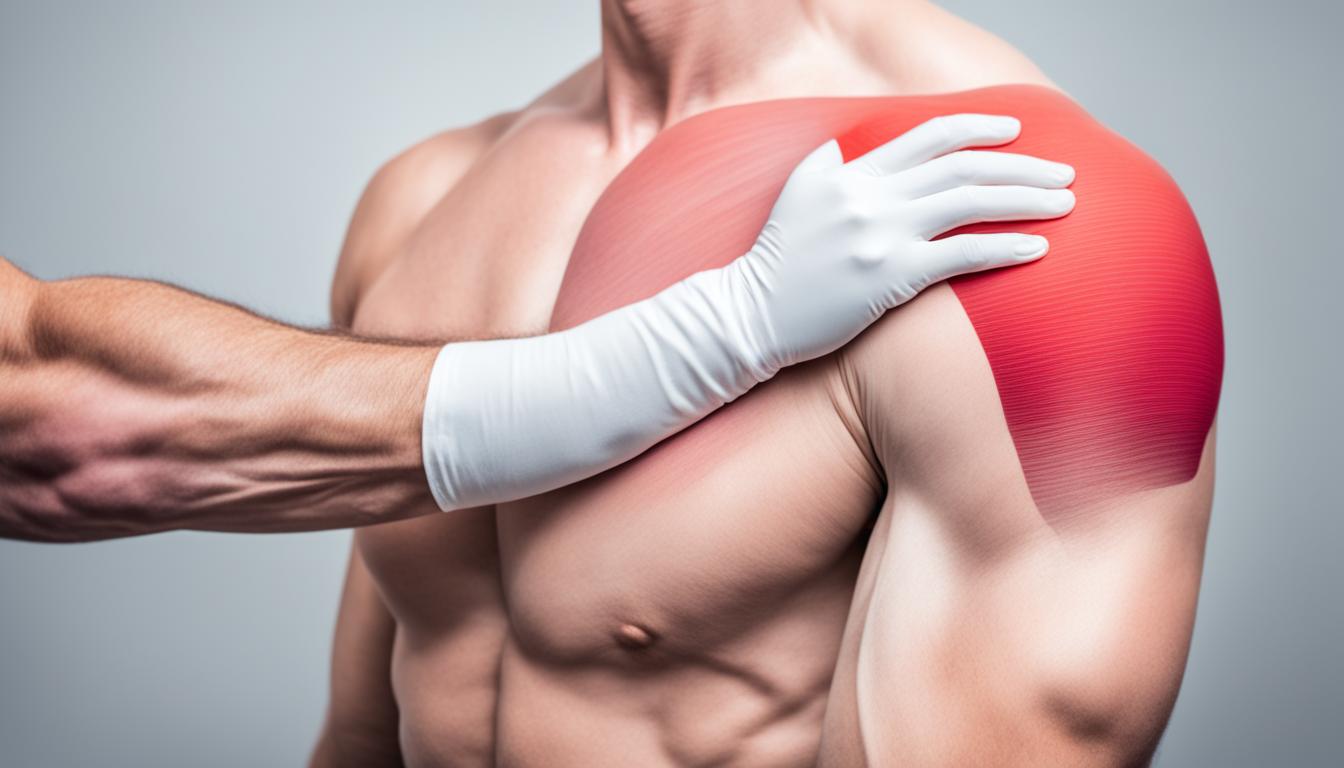Rotator cuff injury is a common cause of shoulder pain. It can lead to trouble in using your shoulder. Between 30-70% of shoulder pain cases are from rotator cuff problems.
The main reasons for this injury are getting older, being overweight, smoking, and being diabetic. Also, doing the same shoulder movements often can hurt your rotator cuff. The chance of getting a rotator cuff tear goes up as you get older. Tears can be small or big.
If you have a small tear or tendinopathy, your doctor might suggest physiotherapy first. But if it’s a big tear, you might need surgery. Sometimes, even after surgery, the tear might not fully recover, and you’ll still need to work hard in rehab.
Stem cell therapy is a new treatment that looks very promising. It seems to help repair rotator cuff tears by making the tendon stronger. Stem cells can turn into tenocytes, which help make new tissue through their own actions. They can also make the shoulder less inflamed.
Researchers are looking into using stem cells along with other new therapies. They want to make the best approach for fixing rotator cuff tears. This could include mixing stem cells with special cellular parts, genetic treatments, and new ways of putting these treatments into your body.
Key Takeaways:
- Rotator cuff injuries can be very painful and limit your shoulder’s movement.
- Risk factors include getting older, obesity, smoking, and repetitive shoulder motions.
- Physiotherapy is often the first step for a small tear. Big tears may need surgery.
- Stem cell therapy offers hope in healing rotator cuff tears by reducing swelling and making new tissue.
- Scientists are working to improve how we treat rotator cuff injuries by combining stem cell therapy with other advanced techniques.
Diagnosis of Rotator Cuff Injury
Finding out if someone has a rotator cuff injury involves checking their symptoms, doing physical exams, and looking at images. The doctor will talk to the patient to learn about their symptoms and risks. Then, they will check the shoulder’s movement, strength, and look for any issues.
They might also do tests like X-rays, ultrasound, or MRI scans to see the injury better. X-rays help rule out other problems. Ultrasound and MRI show clear pictures of the rotator cuff and the area around it.
Special tests, like the Neer and Hawkins-Kennedy, are used to see if they cause pain. This helps the doctor confirm the problem.
Usually, the first step is to try exercises focused on the rotator cuff along with physical therapy. These help control pain and make the shoulder work better. Therapy includes specific exercises, improving how your shoulder moves, and using heat or cold packs.
Diagnostic Methods for Rotator Cuff Injury
| Diagnostic Method | Description |
|---|---|
| Medical History | Detailed consultation regarding symptoms and risk factors. |
| Physical Examination | Assessing shoulder range of motion, strength, and instability. |
| Imaging Studies | X-rays, ultrasound, or MRI for confirmation and assessment. |
| Diagnostic Tests | Reproducing pain through Neer and Hawkins-Kennedy tests. |
Innovative Treatments for Rotator Cuff Injury: Stem Cell Therapy
Stem cell therapy is a new way to treat rotator cuff injuries. It uses mesenchymal stem cells (MSCs) from either the patient or a donor. These cells can turn into tenocytes. They also release substances that help heal and reduce swelling.
This treatment involves injecting cells or using them during surgery. Another method uses tiny particles with special healing powers. These promote making collagen, reduce swelling, and help in tendon healing.
After surgery or stem cell therapy, doing exercises is very important. It helps regain movement, strengthens the muscles, and makes the shoulder work better. Exercises that focus on the rotator cuff can really help the injured area and the shoulder joint.
Comparison of Rotator Cuff Treatments
| Treatment | Advantages | Disadvantages |
|---|---|---|
| Surgical Repair | – High success rate in complete tears – Direct repair of the tendon |
– Requires anesthesia and surgery – Postoperative rehabilitation |
| Stem Cell Therapy | – Promotes tendon healing and regeneration – Reduces inflammation – Potential for autologous cells |
– Limited availability and accessibility – Still under research and development |
| Physical Therapy | – Non-invasive and conservative approach – Improves shoulder function and strength – Facilitates recovery |
– May not be effective for severe tears – Time-consuming |
Conclusion
Rnds of modern tech to
Over time, our shoulders can wear down. This happens more as we get older. Being overweight and doing the same shoulder-heavy activities a lot can also wear the shoulder down. This can cause the rotator cuff, a group of tendons in the shoulder, to get hurt. Sometimes, simple things like physical therapy can help. But for really bad tears, surgery might be the best option. Even with surgery, getting the shoulder strong again after takes a lot of work.
Stem cell therapy is a newer way to help the rotator cuff heal. Stem cells can make new tendon cells and help grow the tendon back stronger. They also make things that help reduce inflammation. This process looks pretty promising for healing the tendon quicker and better.
In the future, scientists hope to make rotator cuff repairs even better. They are looking at using gene therapy and new materials along with stem cells. These methods could mean much better results for people with rotator cuff injuries. This research brings a lot of hope for a future where this kind of injury is easier to treat and heal from.

